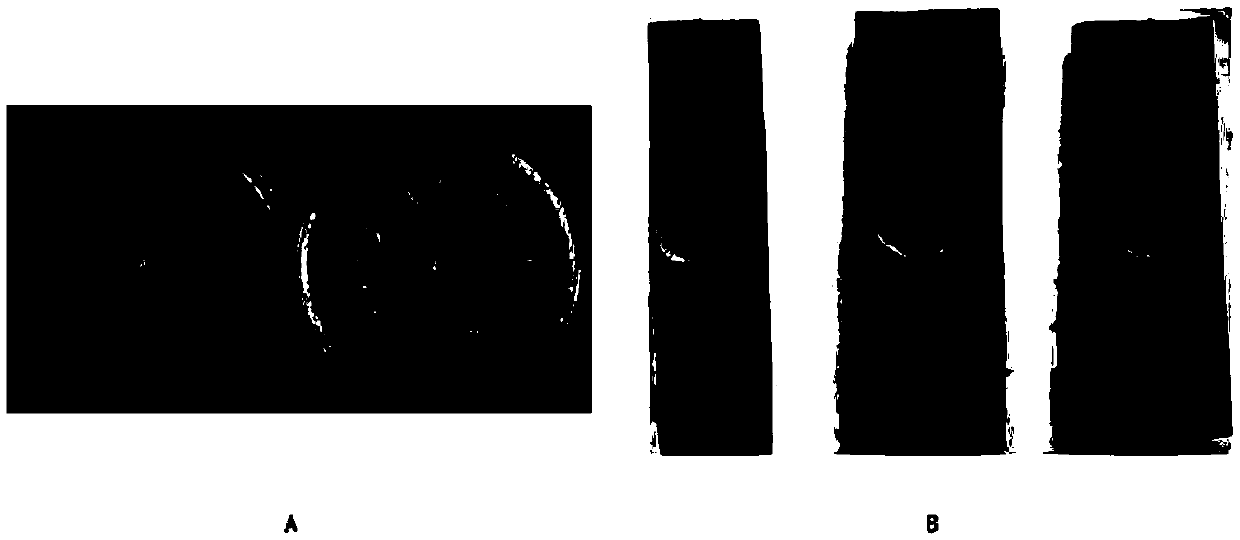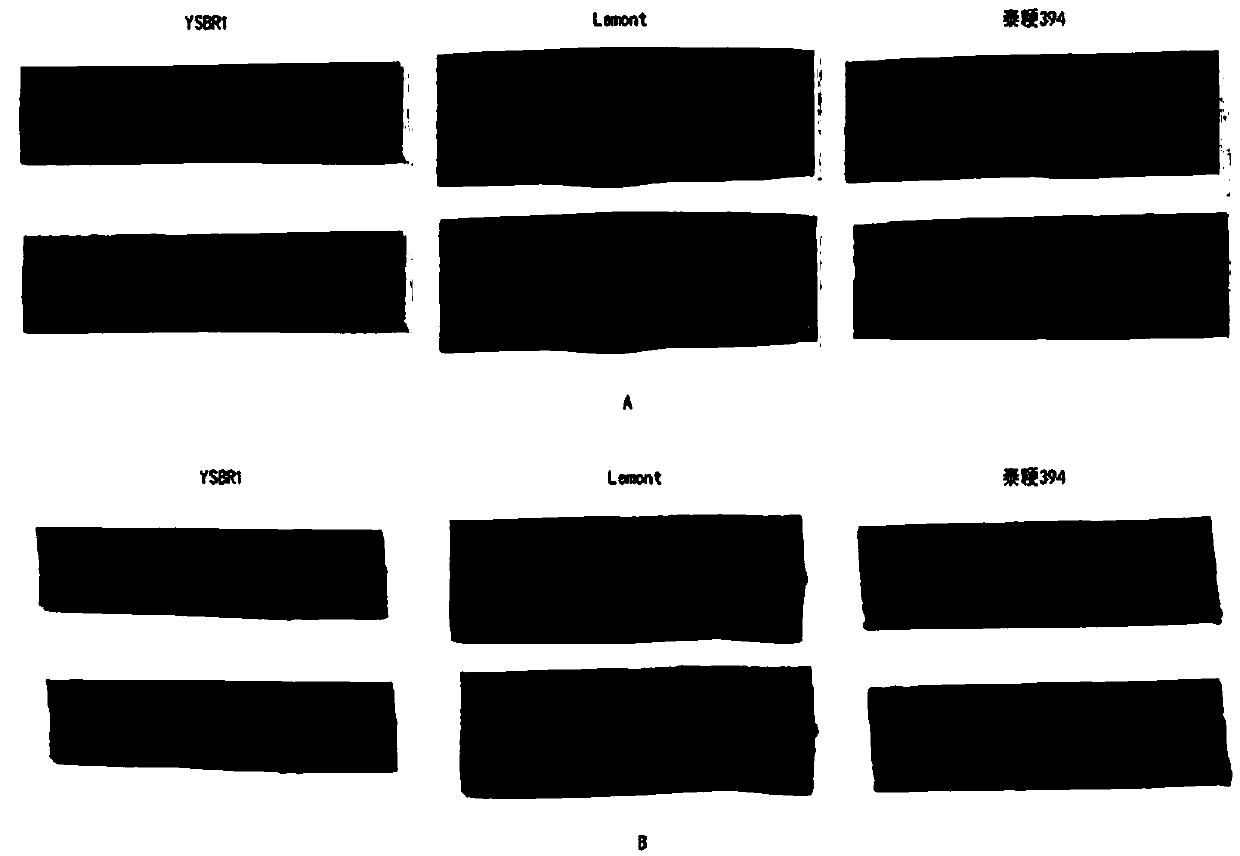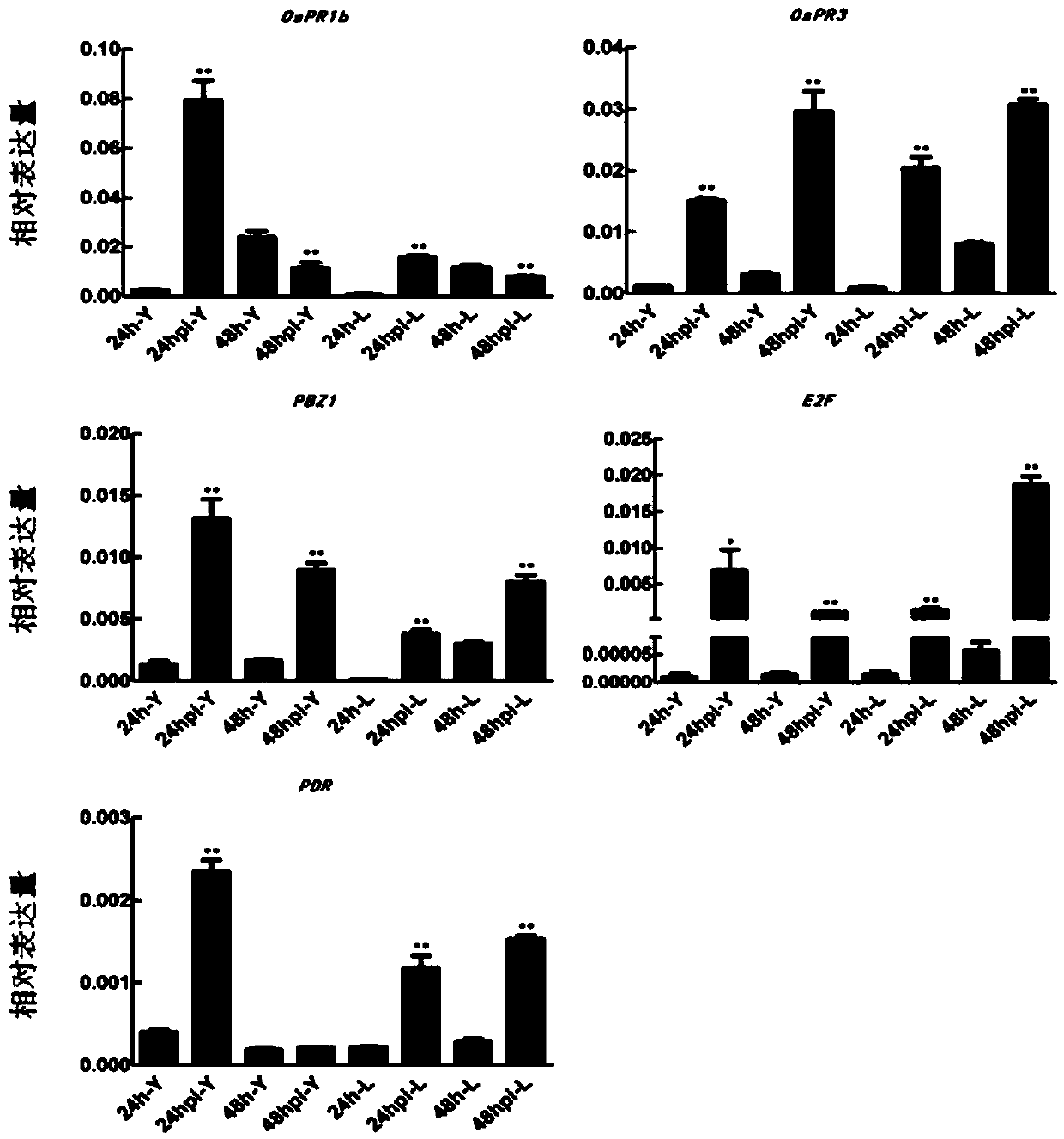Method for performing banded sclerotial blight inoculation and resistance evaluation by means of rice detached leaves
A technology for detached leaves and sheath blight, which is applied in the field of sheath blight inoculation and resistance evaluation, can solve the problems of long test period, difference in growth vigor of different varieties affecting identification results, and seasonal restrictions, so as to improve stability and The effect of accuracy
- Summary
- Abstract
- Description
- Claims
- Application Information
AI Technical Summary
Problems solved by technology
Method used
Image
Examples
Embodiment
[0021] Rice planting: The seeds of YSBR1, Lemont and Thai Japonica 394 were packaged in parchment paper bags for soaking and germination. On the 6th day of germination, rice buds with basically the same growth were selected and sown in the seedling field. After 25 days, the seedlings with good growth were transplanted into the field. During the tillering stage of rice (about 30 days after transplanting), from the tillers with dark green leaf color, no pests and diseases, and strong growth, cut the first or second leaf fully unfolded, and inoculate with sheath blight.
[0022] Rhizoctonia solani culture: cut the agar block with rhizoctonia rhizoctonia mycelium into 0.4~0.5cm small pieces with a sterile scalpel, inoculate into 0.005% tetracycline (wt·vol) and 20ml potato dextrose agar (potatodextroseagar, PDA ) medium plate, sealed with a parafilm, placed upside down in an incubator at 28°C, and activated for 2 to 3 days. The surface of the medium was covered with white hyphae an...
PUM
 Login to View More
Login to View More Abstract
Description
Claims
Application Information
 Login to View More
Login to View More - R&D
- Intellectual Property
- Life Sciences
- Materials
- Tech Scout
- Unparalleled Data Quality
- Higher Quality Content
- 60% Fewer Hallucinations
Browse by: Latest US Patents, China's latest patents, Technical Efficacy Thesaurus, Application Domain, Technology Topic, Popular Technical Reports.
© 2025 PatSnap. All rights reserved.Legal|Privacy policy|Modern Slavery Act Transparency Statement|Sitemap|About US| Contact US: help@patsnap.com



